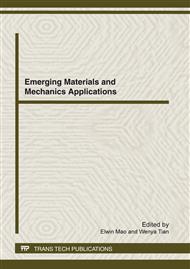p.544
p.548
p.553
p.558
p.562
p.568
p.571
p.576
p.582
Dynamic Simulation Analysis of a Ship-Borne Loading Device
Abstract:
In order to improve design safety and reliability on ship-borne loading device, dynamic model of a ship-borne loading device was built based on ADAMS. Wave excitation under 5 and 8 level of sea state were loaded on the condition of limit marine working environment. Kinetic property of ship-borne device was simulated, dynamic behaviors of key parts were also analyzed. Mechanism optimal strategy was proposed and verified by increasing horizontal roller layout and extending gap between horizontal roller and track, providing with an analysis tool for the optimization design of ship-borne device.
Info:
Periodical:
Pages:
562-567
Citation:
Online since:
March 2012
Authors:
Keywords:
Price:
Сopyright:
© 2012 Trans Tech Publications Ltd. All Rights Reserved
Share:
Citation:


